The Lifespan of Birds: Understanding Longevity
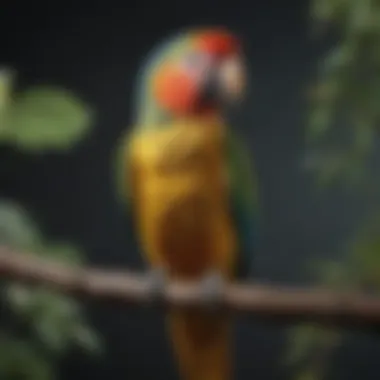
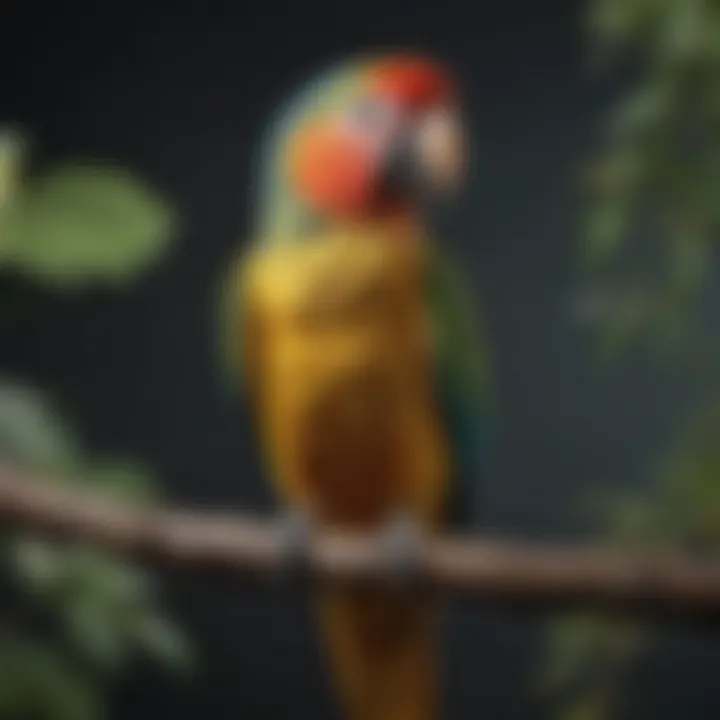
Intro
Understanding the lifespan of birds is crucial for both enthusiasts and caretakers. Various factors heavily influence avian longevity, including genetics, habitat, diet, and the overall care provided.
As pet bird ownership continues to grow, knowledge about how to enhance the lives of these creatures becomes vital. Not only do these insights contribute to the well-being of individual birds, but they also promote a deeper appreciation for avian welfare as a whole. This article will explore critical elements that shape the life expectancy of birds, aiming to equip bird owners, aspiring parents, and breeders with effective strategies.
Care Tips
Caring for birds is not just about providing food and water. Attention to their environment, hygiene, and routine can significantly affect their lifespan. Here are essential aspects to consider:
Daily Care Routines
Maintaining a consistent daily routine is key. Feeding, monitoring water levels, and interacting with birds should all happen at set times. Regular engagement helps build trust and companionship, critical for their mental health.
Cage Setup and Maintenance
A well-organized cage plays a significant role in a bird’s life. Ensure sufficient space for movement. Playstands and toys must be included to stimulate their curiosity. It is important to clean the cage regularly, ensuring that bird droppings and waste do not affect their health.
Hygiene and Cleaning Practices
Hygiene is crucial in preventing illness. Clean food and water containers frequently. Always remove any spoiled food. Monthly deep-cleaning of the cage can also help maintain a healthy living environment.
Seasonal Care Adjustments
Seasons change, and so do a bird's needs. During colder months, ensure they are insulated from harsh weather. Summer may require extra attention to hydration and avoiding heat stress. Adjust care routines to prioritize their comfort throughout the year.
Behavioral Insights
Understanding bird behavior is essential in providing the best care possible. Behavioral insights lead to better responses to their needs.
Understanding Bird Body Language
Birds communicate through body language. Learn to recognize signs of contentment, stress, or discomfort. For instance, puffed feathers can signal a relaxed state, while rapid wing flapping may indicate agitation or excitement.
Common Behavioral Issues and Solutions
Identifying common issues like excessive screeching or feather plucking is crucial. Engage them with toys or provide training to redirect unwanted behaviors. Patience plays an important role in modifying negative habits.
Positive Reinforcement Techniques
Using positive reinforcement can greatly enhance training efforts. Reward desired behaviors with treats or praise. This encourages a strong bond and helps birds learn effectively.
Social Interaction Needs
Birds are social creatures. Some species thrive on interaction with humans or other birds. Schedule time each day for play or conversation to support their social needs.
Nutrition Guides
Proper nutrition is one of the cornerstones of enhancing lifespan.
Essential Diet Components
A healthy diet should consist of a variety of seeds, fruits, and vegetables. Each species requires specific dietary components. Research the needs of your particular bird.
Safe and Toxic Foods
Familiarize yourself with food that is safe and toxic. Foods like avocado and chocolate can be fatal. Always prioritize safe bird food and consult professional sources when in doubt.
Supplements and Treats
Consider using supplements for enhanced nutrition. Calcium and vitamins can fortify your bird's health. Offer occasional treats as rewards but monitor their overall diet to avoid obesity.
Feeding Strategies for Different Species
Different species may have unique feeding habits. For instance, a budgie's dietary needs differ from those of a macaw. Research the specific dietary requirements for your bird to ensure optimal health.
Wellness and Health
A proactive approach to wellness can extend a bird's lifespan.
Routine Health Checkups
Regular vet visits are essential. Schedule annual check-ups to monitor health and keep vaccinations updated. Early detection of health issues can lead to more effective treatments.
Identifying Symptoms of Illness
Learn to recognize symptoms of illness, such as lethargy, changes in appetite, or unusual droppings. Observational skills are important for timely intervention.
Preventative Care and Vaccinations
Preventative care includes maintaining a balanced diet and ensuring a clean environment. Vaccinations are vital to prevent common diseases. Stay informed on recommended vaccinations for your bird's species.
Mental and Emotional Well-being
Mental stimulation is just as vital as physical health. Provide daily interaction and mind-engaging toys. Socialization can alleviate stress and ensure happiness.
Enriching Activities
Engaging birds in various activities fosters longevity and mental well-being.
Toys and Playtime Ideas


Rotate toys often to keep curiosity alive. Interactive toys can stimulate problem-solving skills. Also, spend time playing with your bird, allowing for physical activity.
Training and Tricks
Training not only builds a bond but also challenges a bird mentally. Start with basic commands and gradually introduce more complex tricks to keep their mind sharp.
Outdoor Activities and Interactions
Supervised outdoor time can be invigorating. Natural sunlight helps with vitamin D synthesis, promoting health. Ensure safety with harnesses or secure enclosures.
DIY Projects for Mental Stimulation
Creating homemade toys stimulates creativity and curiosity. Use safe materials to design puzzles or enrichment activities that will hold their attention.
By understanding and applying these care tips, bird owners can significantly improve the quality of life for their feathered companions.
These segments serve as a foundation for nurturing birds effectively, ultimately enhancing their health and longevity.
Prolusion to Bird Lifespan
Understanding the lifespan of birds is more than just a matter of curiosity for pet bird owners and avian enthusiasts. It involves a complex interplay of genetics, habitat, diet, and care that can significantly affect how long various bird species live. The longevity of birds varies widely, and knowing these differences can guide owners in providing the best possible care for their feathered companions.
Birds are not merely pets; they are intricate beings with specific needs. Recognizing the factors that influence their lifespan can lead to proactive measures that enhance their quality of life. This understanding lays the foundation for better bird care practices, wellbeing, and an appreciation for avian diversity.
Moreover, bird longevity impacts breeding practices and conservation efforts. For breeders, knowledge about the average lifespan of different species can influence breeding decisions and ensure healthier outcomes. For conservationists, understanding lifespan aids in developing effective strategies to protect bird species in the wild.
"Lifespan is not just a number; it reflects the delicate balance of multiple factors that support a bird's vitality."
In this section, we will delve into the importance of this topic, considering the implications not just for keeping pet birds but also for broader ecological and conservation concerns. The insights gained here are vital for any bird owner, aspiring bird parent, or bird breeder looking to create a nurturing environment for their avian friends.
General Lifespan of Birds
Understanding the general lifespan of birds is crucial for various reasons. It provides insights into the life cycles, behavioral patterns, and ecological roles of avian species. This knowledge aids pet bird owners, breeders, and enthusiasts in making informed decisions about care and husbandry. Knowing average lifespans also emphasizes the importance of fostering the right environment and medical care to enhance the quality of life for birds.
Average Lifespan Across Species
Bird lifespans can vary significantly between species. For instance, smaller birds like finches and canaries often live between 5 to 10 years, while larger species such as macaws and cockatoos can live 50 years or more.
Some examples of average lifespans include:
- Budgerigars: 5 to 10 years
- Cockatiels: 10 to 15 years
- African Grey Parrots: 40 to 60 years
- Lovebirds: 10 to 15 years
The variability in lifespan among bird species stems from various genetic and environmental factors, as well as their specific care requirements. In controlled environments like homes, enriched care often promotes longer life.
Factors Influencing Lifespan
Several factors contribute to the lifespan of birds. These include genetics, diet, habitat, and overall care. Each element plays a significant role in determining how long a bird may live.
- Genetics: Some species carry genetic traits that influence their longevity. Selective breeding can enhance traits related to better health.
- Diet: Nutrition is vital. A balanced diet rich in vitamins and minerals leads to healthier birds. Birds receiving poor nutrition may suffer from obesity, leading to numerous health issues.
- Habitat: Birds kept in stimulating environments with proper space tend to thrive. In contrast, a lack of social interaction or mental challenges can lead to stress, which impacts longevity.
- Care Practices: Regular veterinary visits and proper hygiene are essential. Pet birds that receive routine care are more likely to live longer, healthier lives.
"Understanding these factors can significantly enhance the life expectancy of birds in captivity."
In summary, grasping the average lifespans and the factors influencing them is foundational for all involved in avian care, providing a pathway toward better avian welfare.
Lifespan by Bird Type
Understanding the lifespan of birds by their classifications is essential for recognizing how different species adapt to their environments and the specific challenges they face. This section offers insights into the distinctions between passerine and non-passerine birds, along with their overall longevity in both wild and domestic settings. Such knowledge benefits pet bird owners and aspiring bird parents, helping them to make informed decisions about care and habitat management.
Passerines
Passerines, also known as perching birds, represent the largest order of birds, which encompasses a significant variety of species, including sparrows, warblers, and finches. The average lifespan of passerines can vary widely, generally ranging from 2 to 15 years depending on particular species. For example, some common songbirds often have shorter lifespans, while species such as the American robin may live longer due to their adaptability.
Factors influencing the lifespan in passerines include environmental conditions, food availability, and predation risks. Many passerines can face ups and downs in their life expectancies depending on the habitat quality. Furthermore, migratory behavior may also play a role in their longevity as those constantly on the move can face more hazards than those that remain stationary.
Non-Passerines
Non-passerines include a diverse group of birds like raptors, waterfowl, and parrots. Many non-passerines, especially larger species like eagles and parrots, have significantly longer lifespans compared to passerines. For instance, some parrot species can live well into their 50s or even longer in captivity. The varying life expectancies are often linked to size, as larger birds generally tend to have longer lifespans.
In addition, their lifestyle can contribute to longevity; non-passerines often have fewer natural predators and can thrive in implemented care settings. Factors such as breeding habits and social structure also determine the longevity of certain non-passerine species, highlighting the complexity of their life cycles.
Wild Birds vs. Pet Birds
The distinction between wild and pet birds is crucial when considering lifespans. Wild birds typically have shorter lifespans due to various dangers such as predation, habitat loss, and food scarcity. For example, many wild sparrows may live only a few years, while their captive counterparts might exceed this by many years due to the controlled environment and lack of predation.
On the other hand, pet birds, with proper care, diet, and veterinary treatment, tend to live much longer. Factors like owner responsibility and a balanced diet play vital roles in enhancing the lifespan of pet birds. For instance, a well-maintained pet budgerigar may live anywhere from 7 to 15 years in captivity, while a similar bird in the wild may only reach up to 5 years.
Understanding the differences in lifespan across bird types helps inform potential pet owners about the commitments involved in bird care and how environmental factors shape their longevity.
The considerations surrounding the various bird types and their respective lifespans not only allow for better-informed decisions among bird enthusiasts but also encourage a deeper appreciation for the complexities involved in avian life expectancy.
The Role of Genetics and Evolution
Understanding the role of genetics and evolution is essential when discussing the lifespan of birds. Genetics dictates the inherited traits of a species, including biological resilience, reproductive strategies, and adaptability to their environment. These traits can heavily influence how long a bird can live.
Key elements of genetics that affect lifespan include longevity genes, which may enhance survival in adverse conditions or promote healthy aging. Different species express these genetic traits variably. For instance, some birds have evolved mechanisms to avoid diseases common in their environment. Additionally, evolutionary history shapes how species interact with their habitat, influencing resource availability and metabolic health.
Species-Specific Traits
Divergent bird species display an array of species-specific traits directly tied to their potential longevity. For example, larger bird species, like the Albatross, generally have longer lifespans than smaller birds. They may have fewer predators due to their size and can adapt to a wide range of habitats.
Conversely, smaller birds like the American Goldfinch tend to have shorter lifespans, often between 3-10 years in the wild, influenced by factors like food availability, habitat conditions, and predation risks. The variation among species points to the importance of biological makeup and environmental interactions.
Adaptations for Longevity

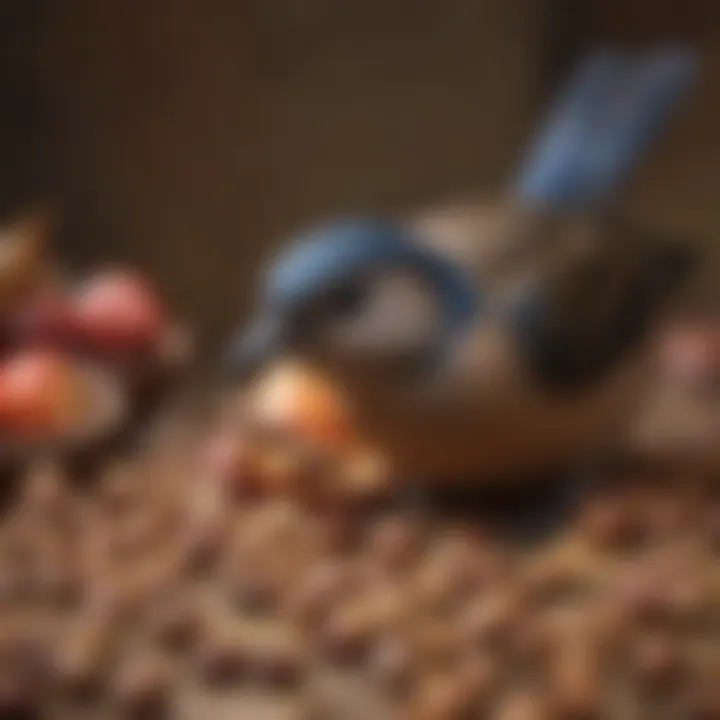
Birds have adapted various traits that promote longevity. Some of these adaptations include
- Dietary Choices: Species that adjust their diet based on seasonal availability often exhibit greater survival rates.
- Social Structures: Social birds, such as African Grey Parrots, benefit from group dynamics that offer protection against predators and enhance the chances of survival.
- Nest Defense Mechanisms: Certain species have developed unique nesting strategies that minimize predation and environmental threats, which in turn can extend life expectancy.
Environmental Factors Affecting Lifespan
Understanding the environmental factors affecting the lifespan of birds is crucial for anyone interested in avian well-being. These elements directly contribute to the overall health and longevity of various bird species. There are two primary subcategories worth examining: habitat and habitat preservation, and predation and survival rates. Both aspects play significant roles in determining how long birds can thrive in their natural or domestic settings.
Habitat and Habitat Preservation
The habitat in which a bird resides offers essential resources such as food, water, and shelter, all of which are critical for survival. Birds in well-preserved habitats often display longer lifespans due to the availability of necessary nutrients and a reduced risk of disease.
Improper maintenance of these habitats can lead to habitat loss, which has a direct negative impact on bird populations. Urbanization, pollution, and deforestation are prevalent threats that compromise the natural environments of birds. As a result, many species are forced to adapt to changing conditions that may not favor their longevity.
Bird owners, breeders, and enthusiasts can aid in habitat preservation by supporting wildlife conservation efforts and educating others about the importance of healthy ecosystems. One practical approach is to create bird-friendly spaces, even in urban environments, by incorporating native plants into gardens, providing nesting sites, and reducing pesticide use.
Predation and Survival Rates
Predation is another critical factor influencing avian lifespan. Birds that inhabit areas with high predation risk tend to have shorter lives. This is due to the constant threat they face from natural predators. Species that develop effective strategies for evading predators, such as flocking behavior or camouflaging, are more likely to live longer.
Additionally, survival rates can vary significantly between species. Larger birds often have fewer natural predators and, therefore, may enjoy longer lifespans. Species that rely heavily on ground foraging might face higher predation risks, which can drastically shorten their expected lifespan.
For pet bird owners, understanding these dynamics can further enhance the care provided to their birds. Implementing strategies to minimize stress and simulate a more natural environment may help in mitigating some of these risks and extending their feathered companions’ lives.
"Environmental factors such as habitat and predation are pivotal in understanding bird longevity, directly influencing health and survival rates."
Diet and Nutrition
In understanding the longevity of birds, one cannot overlook the significant role that diet and nutrition play. A well-balanced diet is crucial in promoting health and optimal function within various avian species. Birds, much like other animals, require specific nutrients to sustain their energy levels and overall well-being. These nutrients include proteins, carbohydrates, fats, vitamins, and minerals. The balance of these components can influence a bird's lifespan profoundly.
Proper nutrition tends to expand life expectancy by supporting the immune system and reducing the risk of diseases. When the body receives the right nourishment, it can resist infections and recover more swiftly from ailments. Bird owners need to be conscious about their pets’ diet. This knowledge directly benefits not only the pet avian but also enhances the living experience for owners through companionship.
Importance of a Balanced Diet
A balanced diet acts as the foundation of avian health. Most birds do well with a mixture of grains, fruits, vegetables, nuts, and seeds. Each component serves a purpose:
- Grains: Provide energy through carbohydrates and are usually the main part of the diet.
- Fruits and Vegetables: Supply essential vitamins and minerals, preserving good organ function and metabolism.
- Nuts and Seeds: Offer fats and proteins, critical for energy and overall health.
Feeding a bird a varied diet is important. It prevents them from becoming bored and encourages natural foraging behaviors. Additionally, some species may have unique dietary needs. For instance, vitamin A is vital for many birds but is especially important for species like budgerigars. Understanding such needs helps in creating a healthier lifestyle.
A balanced diet not only keeps birds lively but also prolongs their life.
Impact of Obesity and Health Issues
Obesity in birds often goes unnoticed until it becomes a serious health issue. Overfeeding and a lack of exercise can lead to significant weight gain. Birds that become obese are at risk of developing various conditions such as liver disease, heart issues, and joint problems. These ailments not only reduce the quality of life but also shorten lifespan.
Common indicators of obesity include difficulty in flight, changes in behavior, and an inability to groom properly. Regular monitoring of weight and body condition is crucial for pet owners.
Preventive measures must be taken to maintain an appropriate weight. Here are a few strategies:
- Portion Control: Ensure feeding practices follow appropriate guidelines.
- Encouraging Activity: Provide toys and opportunities for exercise, which helps in burning calories.
- Regular Health Checks: Schedule frequent visits to a vet for assessments.
In summation, nutrition is a key component of avian health. Understanding dietary requirements can lead to better life quality and longevity for birds. Knowledge of balanced diets and the ramifications of obesity aids in promoting good health among pet bird owners.
The Impact of Care on Longevity
Care holds a crucial position in determining the longevity of birds. Pet owners often underestimate how their daily practices significantly impact the health and lifespan of their avian companions. Appropriate care includes various aspects such as diet, environmental conditions, and social interaction. Each element contributes not only to immediate well-being but also to long-term health.
Owner Responsibility
As a bird owner, ensuring the best care for your feathered friend is your primary responsibility. This commitment starts with understanding the specific needs of the species you own. Different birds have different requirements. For instance, larger species like macaws may need more space, while smaller birds like canaries thrive in a different environment.
To provide effective care, you must continuously educate yourself. Read books, articles, or join online forums where bird owners share insights. Regular interaction with avian specialists can also be beneficial. Recognizing signs of stress or illness early can help prevent larger health issues down the line. A well-cared-for bird is more likely to live a longer, healthier life, enriched by proper stimulation and comfort.
Routine Veterinary Care
Routine veterinary care is essential for maintaining a bird's health and longevity. Just like other pets, birds should have regular check-ups to monitor their health. During these visits, a veterinarian can identify potential health concerns that may not be immediately visible to the owner. Common issues include nutritional deficiencies, feather conditions, and more severe diseases like avian influenza.
Preventive care plays a role in extending your bird's lifespan. Regular exams can catch problems before they become serious. Additionally, vaccines may be necessary for certain species, depending on the risks in their environment. Neglecting periodic vet visits may result in health complications that could have been avoided with early detection.
"The regularity of medical check-ups enhances not only the lifespan of birds but also their quality of life."
In summary, both owner responsibility and routine veterinary care substantially influence the longevity of birds. Moving forward, it is aimless to overlook these elements if one wishes to provide a long, fulfilling life for their avian companion. Emphasizing care can lead to not just survival but a vibrant life.
Common Health Issues Affecting Lifespan
Understanding common health issues that affect a bird's lifespan is crucial for pet bird owners and breeders. Birds, much like humans, are susceptible to various health problems that can directly impact their longevity. By recognizing these issues early, one can take significant steps to ensure the well-being of their feathered companions. This section emphasizes the importance of awareness, education, and proactive care in enhancing a bird's life expectancy.
Chronic Conditions
Chronic conditions are diseases or disorders that persist for a long period and can significantly shorten a bird's lifespan if not managed properly. Some common chronic issues include:
- Obesity: This condition often stems from incorrect diet and lack of exercise. Obese birds are more prone to fatty liver disease and other metabolic disorders.
- Respiratory Diseases: Birds are vulnerable to a range of respiratory issues. Factors like poor air quality, exposure to dust, and inadequate ventilation can precipitate chronic respiratory conditions.
- Gout: This is caused by high uric acid levels, often linked to diets that are too rich in protein. Gout can lead to severe pain and mobility issues affecting overall health.
- Feather-Plucking and Self-Mutilation: These behaviors are not just detrimental to a bird's appearance but can also indicate underlying health or psychological issues.
Addressing chronic conditions increases a bird's quality of life and longevity. Regular vet checks help in the early identification of these problems. Educating oneself about the signs and symptoms can lead to timely intervention.
Preventive Measures
Preventive measures are essential in maintaining a bird's health and potentially extending its lifespan. Here are several strategies that can be implemented:
- Balanced Diet: Offering a variety of foods that meet the specific nutritional needs of the species is paramount. Including fresh fruits, vegetables, and high-quality pellets ensures balanced nutrition.
- Regular Vet Check-ups: Routine health check-ups allow for the early detection of health issues. Vets can provide vaccinations and suggest preventive care tailored to specific species.
- Environmental Enrichment: Creating a stimulating environment helps prevent behavioral problems that may arise due to stress or boredom. This not only keeps birds physically active but also mentally engaged.
- Hygiene Practices: Maintaining cleanliness in a bird's living area helps prevent the spread of bacteria and infections. Regular cage cleaning and proper hygiene practices are necessary for good health.
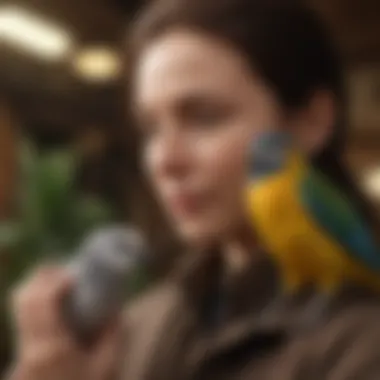
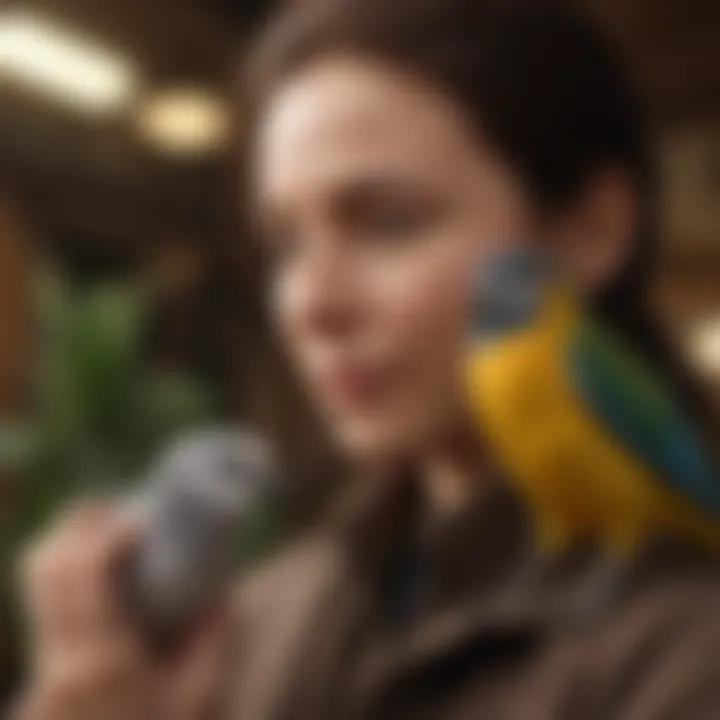
"Prevention is better than cure". By taking steps to prevent health issues, pet owners can significantly improve their bird's chances of a long, healthy life.
Case Studies: Lifespan Among Different Species
Understanding different species of birds and their lifespans provides practical insights that are essential for bird care and breeding. Each species has its own biological mechanisms that contribute to how long it could potentially live. Analyzing specific examples allows pet bird owners and breeders to comprehend their responsibilities better, tailor care practices, and enhance the overall welfare of their birds.
Working with real-life examples makes it easier to grasp the factors influencing lifespan—whether they come from genetics, environment, or diet. Each case study serves as a unique teaching moment and sheds light on the intricacies of avian health and longevity.
Budgerigars
Budgerigars are one of the most commonly kept pet birds worldwide. Their lifespan typically ranges between 5 to 10 years, although with proper care, some have been known to live even longer. Key considerations for ensuring their longevity include a balanced diet, mental stimulation, and social interaction. Budgerigars thrive in environments that mimic their natural habitat, which can substantially impact their well-being.
Dietary choices play a vital role in their health. A well-rounded nutritional plan should incorporate seeds, pellets, fresh fruits, and vegetables to ensure they receive adequate vitamins and minerals. Implications of inadequate nutrition can lead to chronic health issues, which can shorten their lifespan significantly.
"Budgerigars are social creatures. Their well-being greatly depends on interaction, not only with their human caregivers but also with other birds."
Cockatoos
Cockatoos are known for their dynamic personalities and can live significantly longer than budgerigars, averaging between 20 to 40 years in captivity. Their longevity is associated with their strong social needs and intelligence, making it essential for owners to engage them regularly. Failure to provide enough interaction can lead to behavioral issues and stress, which could affect their health.
Proper housing, such as spacious cages that allow movement and play, is also crucial. Cockatoos require toys and challenges to maintain their mental health. Regular vet check-ups are especially important for cockatoos as they are prone to certain health issues, such as feather plucking and obesity, which can negatively impact lifespan.
Various Parrots
Parrots encompass a wide range of species, from the small Lovebird to the larger African Grey. Their life expectancy varies significantly; for instance, smaller species like Lovebirds live around 10 to 15 years, while larger birds like African Greys can reach 50 years or more if properly cared for.
The diversity in the dietary needs among different parrot species makes understanding each species essential for proper care. Generally, a diet rich in seeds, fruits, and vegetables is needed, but specific requirements differ. Nutritional deficiencies pose severe risks to their health and can limit their lifespan.
Longevity Studies: Research Insights
Research on avian longevity plays a crucial role in understanding how various factors influence the lifespan of birds. These studies provide a basis for assessing the well-being of species, while highlighting the differences in longevity among bird families. The knowledge gained can help bird enthusiasts and caretakers implement effective practices to enhance their birds’ lives. By analyzing data and findings, researchers offer insights not only into genetic and environmental influences but also into practical strategies for care and management.
Scientific Findings on Bird Lifespan
The scientific community has conducted many studies that focus on bird lifespans. These investigations often reveal significant variation across species. For instance, certain species of parrots may live upwards of 50 years, while smaller birds like finches typically have much shorter lifespans of anywhere from 5 to 10 years. Research has indexed several factors contributing to these disparities:
- Genetic Variability: Some species are genetically predisposed to live longer because of their evolutionary history and natural adaptations.
- Environmental Conditions: Studies show that birds in stable, resource-rich environments often have longer lifespans compared to those in harsh or fluctuating conditions.
- Feeding Behavior: Nutritional intake correlates closely with lifespan. Birds with access to a varied and balanced diet tend to exhibit better health and longevity.
- Stress Levels: Chronic stress has been linked to various health problems in birds, which can shorten their lifespan. Birds that experience consistent stress factors, like predation or habitat destruction, often have lower life expectancies.
These scientific findings underscore the importance of understanding both the natural history and behavior of birds.
Implications for Bird Care Practices
The insights gained from longevity studies have valuable implications for how bird owners approach care for their feathered companions. By applying research findings, owners can enhance their birds' quality of life in several ways:
- Tailored Diet Plans: Pet bird owners can take cues from studies on avian nutrition to create well-balanced diets that suit specific species. Providing essential vitamins and minerals can minimize health issues.
- Environmental Enrichment: Creating a stimulating environment with plenty of space and social interaction can reduce boredom and stress, ultimately promoting longevity.
- Regular Health Monitoring: Observing changes in behavior and health can lead to early detection of potential health issues. Routine veterinary check-ups based on research recommendations can ensure that birds receive timely care.
- Stress Reduction Techniques: Understanding the stresses birds face in captivity can help owners create a more secure and comfortable environment, thus promoting a longer life.
"The lifespan of a bird is not solely determined by its species or genetics but is also heavily influenced by the care and environment it receives."
By considering these implications, bird parents can adopt methods to extend their birds' lives, contributing to overall well-being and longevity.
Myths and Misconceptions about Bird Lifespan
Understanding the myths and misconceptions surrounding the lifespan of birds is crucial for pet bird owners, breeders, and enthusiasts alike. These myths can lead to uninformed care practices, ultimately affecting the wellbeing of these animals. By debunking common misconceptions, bird owners gain knowledge that helps them provide appropriate environments and care, enhancing the overall quality of life for their avian companions. The nuances behind these myths not only contribute to better husbandry but also foster a deeper appreciation for the complexities of avian longevity.
Debunking Common Myths
Many misconceptions about bird lifespans persist in popular culture. One common myth is that all bird species have a short life expectancy. While it is true that smaller birds often have shorter lifespans compared to larger species, this generalization is misleading. For example, parrots like the African Grey can live for up to 50 years or more, whereas some small species such as finches or canaries might live around 5 to 10 years.
Another misguided belief is that birds do not experience health issues as they age. This is far from accurate. Like any other animal, birds are susceptible to aging-related conditions. Conditions such as heart disease, arthritis, and vision problems can manifest in older birds. Recognizing these possibilities is important for providing adequate veterinary care.
Lastly, there is a perception that a bird's lifespan is solely determined by species or genetics. While these factors play a significant role, environmental aspects such as diet, habitat, and care practices have equally critical impacts on longevity.
Understanding the Realities
To fully appreciate the lifespan of birds, one must acknowledge the variabilities influencing their longevity. A balanced diet is fundamental to avian health. Nutritional deficiencies can lead to significant health problems, thereby shortening lifespan. Bird owners should focus on providing a diverse and nutritious diet that includes seeds, fresh fruits, vegetables, and commercial pellets formulated for their specific species.
Additionally, proper care and regular veterinary checkups are vital. Pet birds often rely on their owners for health maintenance, and neglecting this aspect can lead to unforeseen health issues.
Another key reality is that environmental stressors can disrupt a bird's wellbeing. Factors such as inadequate living space, lack of social interaction, or even exposure to toxins can all adversely affect a bird’s health and longevity. Creating a stimulating and safe environment is essential for promoting a long and healthy life.
Overall, understanding these truths enables bird owners to adapt their practices, ensuring they meet the physical and emotional needs of their birds. This approach not only helps debunk common myths but also leads to improved care and better outcomes for pet birds.
Ending
The conclusion of this article serves as a crucial summary that encapsulates the essential elements of bird longevity. Understanding how various factors influence a bird's lifespan not only informs potential and existing bird owners but also instills a greater respect for avian life. A thorough appreciation of longevity considerations can result in better care practices, enhanced awareness of the wildlife, and more informed decisions in maintaining pet birds' wellbeing.
Key elements include the diverse factors that contribute to a bird's life expectancy, such as genetics, nutrition, environment, and owner responsibility. Each aspect interacts in a complex manner, revealing the intricacies involved in promoting a healthy life for birds. Recognizing this complexity is vital for caretakers aiming to optimize their companions’ lives.
Furthermore, understanding the implications of longevity research can guide pet bird owners in providing the necessary attention and care required. The information presented throughout emphasizes the importance of holistic care, which encompasses regular veterinary check-ups, preventive measures against health issues, and providing an appropriate diet to maintain an ideal weight. By applying these insights, bird owners can take a proactive approach to ensure their companions thrive in a safe and nurturing environment.
In summary, the conclusion underlines how knowing the lifespan of birds enriches the human-bird relationship, ultimately resulting in a deeper connection, as well as better welfare for these remarkable creatures.
Summary of Key Points
- Average Lifespan: Various bird species exhibit a wide range of life expectancies, greatly influenced by their type and environment.
- Genetic Factors: Certain species possess inherent traits that predispose them to longer or shorter lifespans.
- Environmental Impact: Home habitats and wild conditions can create stark differences in longevity.
- Nutritional Balance: A well-balanced diet plays a critical role in health and lifespan.
- Owner Care: Commitment to regular healthcare and preventive measures significantly enhances a bird's life.
Final Thoughts on Bird Longevity
Bird longevity is a multifaceted topic that encompasses numerous biological, environmental, and caretaker-related factors. For both aspiring and current bird owners, being cognizant of these influences provides two primary benefits: a holistic understanding of avian care and the ability to enhance the lives of their feathered friends. As species differ considerably in their lifespans, the better one understands these differences, the more effectively one can tailor care practices to individual needs. Gaining insights from the research and personal experiences can lead to informing future decisions related to bird ownership, establishing a more sustainable approach to avian care.
In essence, not only does this knowledge enrich the caretaking experience, it also fosters a sense of responsibility and connection, crucial for nurturing a harmonious relationship with the avian species.
Recommended Resources
Understanding avian life expectancy requires not only a keen interest but also access to trustworthy information. Recommended resources provide valuable insights for pet bird owners, aspiring bird parents, and bird breeders. These resources help bridge the gap between theoretical knowledge and practical application, enabling bird enthusiasts to implement the best care practices for their feathered companions.
- Books on Bird Care
Books offer a wealth of knowledge on avian health, behavior, and longevity. Many authors are experts in ornithology or have extensive experience caring for birds. These books are often updated to reflect the latest research and trends in bird care. A key benefit of this longstanding format is the depth of information they can provide, diving into the specifics of bird species, dietary needs, and health concerns. - Websites for Bird Enthusiasts
Online platforms are a crucial haven for real-time information and community support. Websites dedicated to bird care, such as forums, blogs, and educational sites, help enthusiasts share experiences and gather advice. Moreover, the interactive nature of these sites allows for ongoing discussion about emerging topics in bird welfare, longevity, and specific management strategies. Users can often find guides, care sheets, and Q&A sections that address common queries.
By utilizing these resources, bird owners can gain a well-rounded understanding of their pets' needs, which is essential for extending the lifespan of their birds. Gathering comprehensive information from various platforms ensures that caretakers are well-informed and prepared to provide optimal care for their avian companions.















